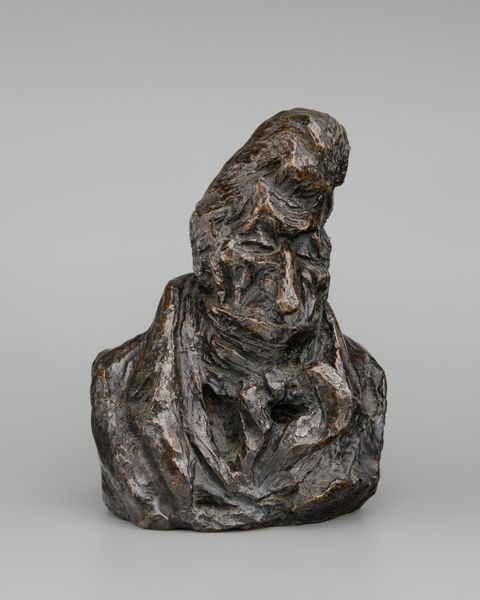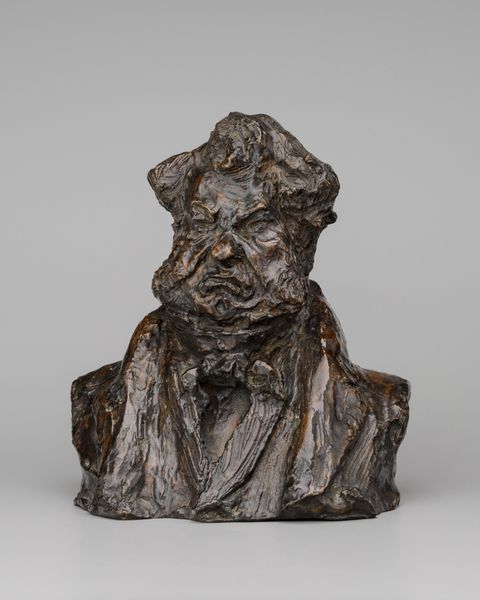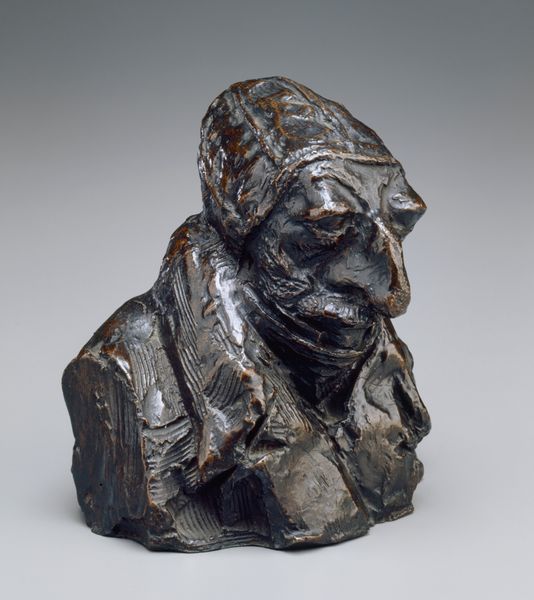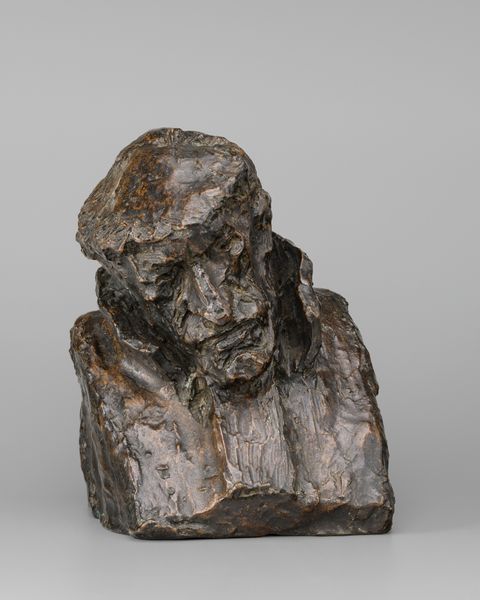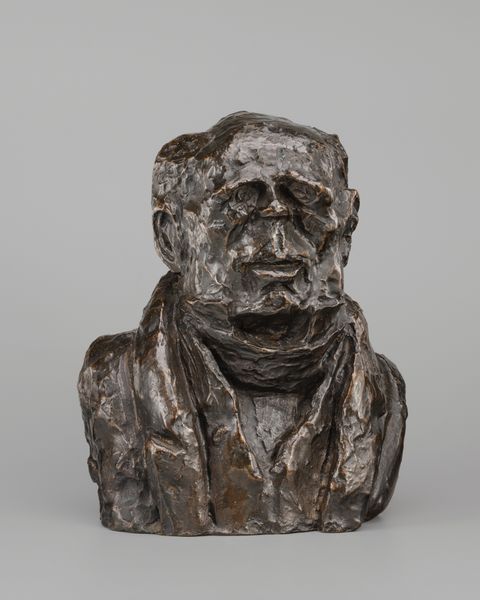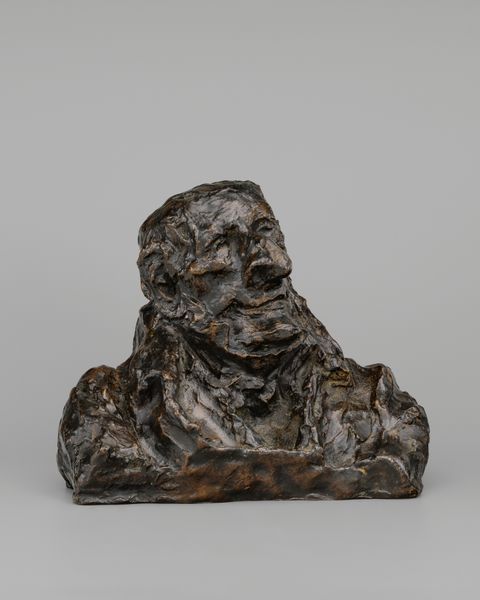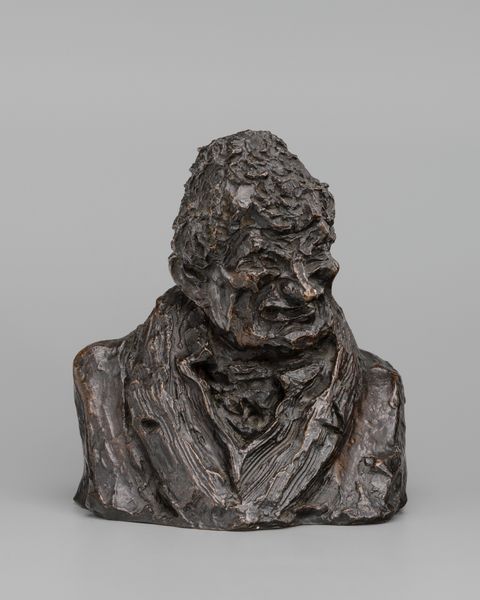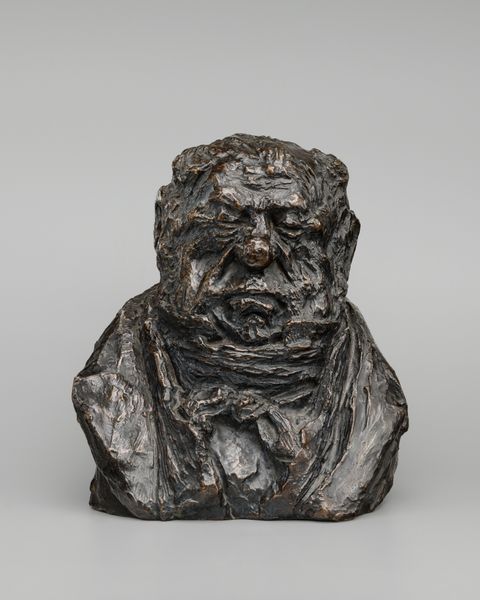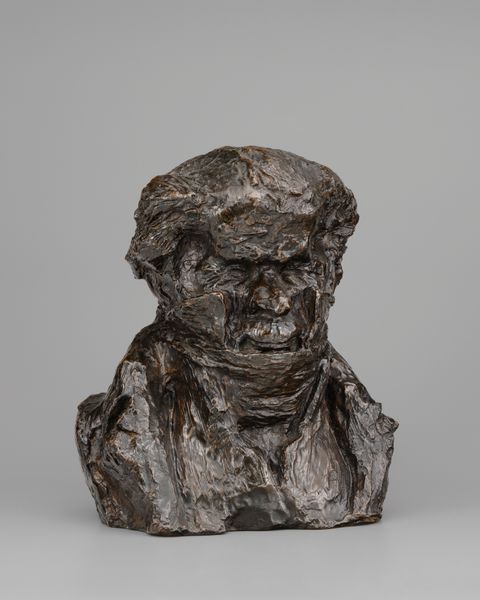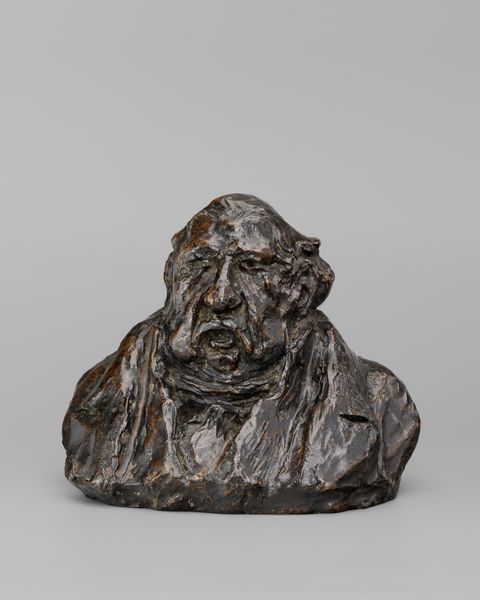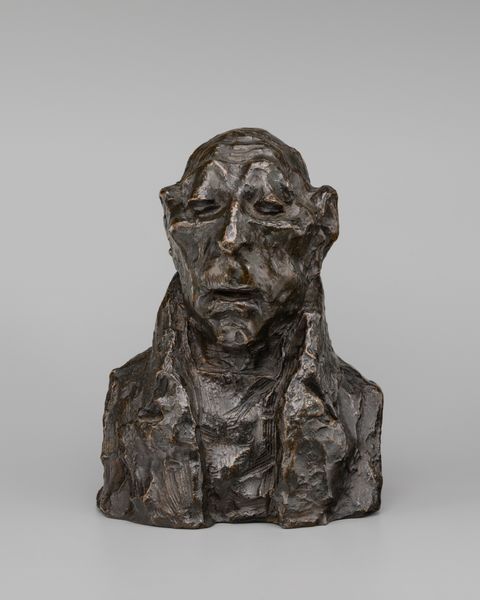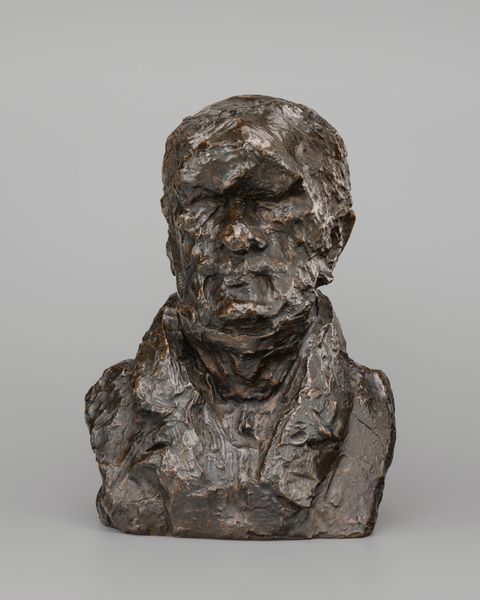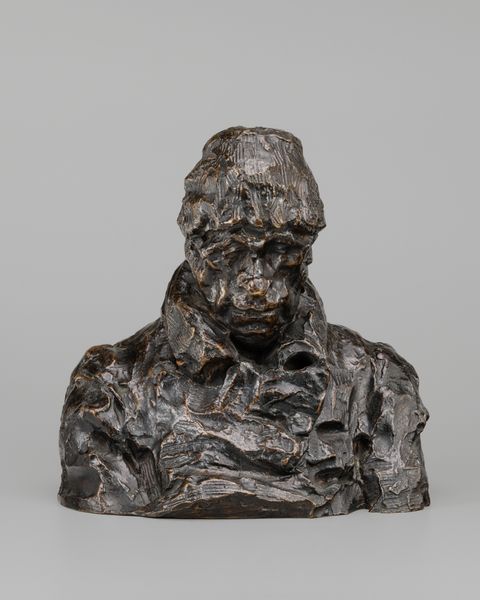
Dimensions: overall: 22.9 x 14 x 13.7 cm (9 x 5 1/2 x 5 3/8 in.)
Copyright: National Gallery of Art: CC0 1.0
Curator: Honore Daumier's bronze sculpture, "Alfred-Frédéric-Pierre, Comte de Falloux," likely crafted between 1848 and 1870, immediately strikes me as incredibly raw and emotionally charged. Editor: Yes, there is something very powerful about it, a sense of a monumental inner world revealed through roughly textured bronze. I see concentrated, deep thought, or even worry etched onto his features. What do you make of it? Curator: Well, considering Daumier’s social commentary, often directed towards the French political class of the time, I believe that this sculpture embodies not only an aesthetic interpretation of Count Falloux, but perhaps, also represents the social complexities linked with the second republic. Note the medium: Bronze, so crucial to sculpture. Daumier's choice speaks volumes. Bronze is associated with tradition and permanence, but here, it's handled with a ruggedness that betrays conventional, classical refinement. Editor: The Count himself was a fascinating figure. He was responsible for significant education reform, some might argue that he promoted conservative religious interests within the education system. I see that struggle reflected in the work, particularly around the eyes. It's as if the symbolic weight of his decisions presses down on him. Daumier seems to capture not just a likeness, but the man’s internal battles. Curator: I'm especially interested in the artistic process implied by the visibly unrefined texture of the piece. Daumier did not just portray him; Daumier seems to dissect, mold, and confront Falloux's place and impact in that era of revolutionary tension, the artist's hand quite deliberately remains very visible here. Every mark testifies to the active making process of social perception. Editor: Indeed, Daumier's use of caricature heightens the sculpture's symbolic impact. He magnifies specific features—the brow, the nose, the set of the mouth—to reveal deeper aspects of Falloux's character and ideology, I am inclined to think that Daumier was a masterful interpreter of men as symbols. Curator: Looking closely, you almost see Daumier's own physical exertion impressed upon the final form, reflecting the broader climate of change in France, its social unease directly informing and molded by Daumier's manipulation of clay before the bronze cast, transforming a personal artistic work into social history. Editor: So we find that this bronze is more than a sculpture of a Count, it’s a portrait of power, doubt and legacy set in revolutionary times. Curator: Precisely. The making and meaning are inextricably bound here. Editor: It leaves you contemplating how society remembers and recreates itself, doesn't it?
Comments
No comments
Be the first to comment and join the conversation on the ultimate creative platform.
